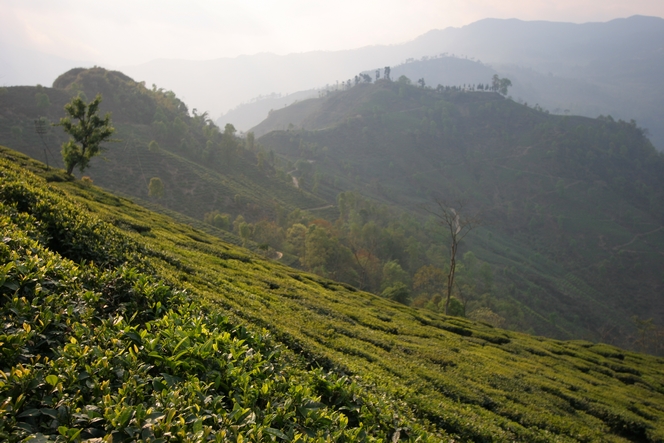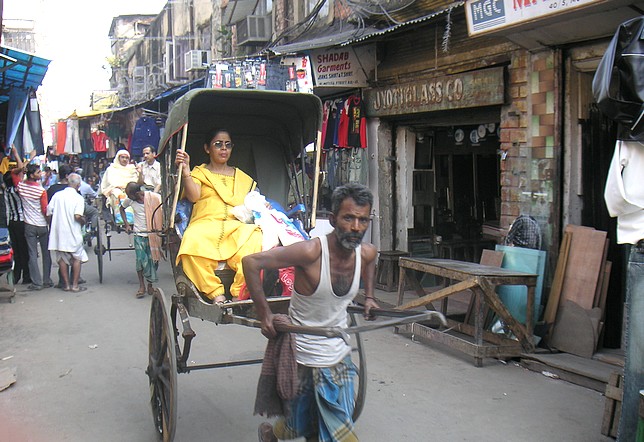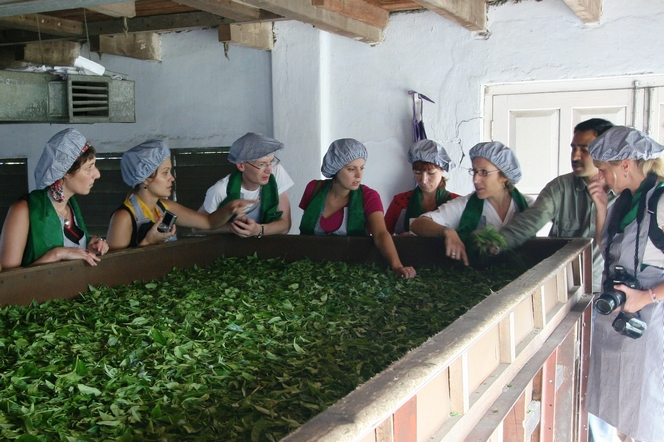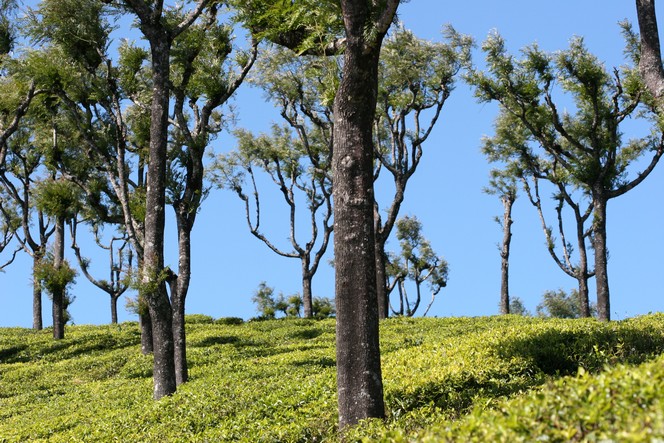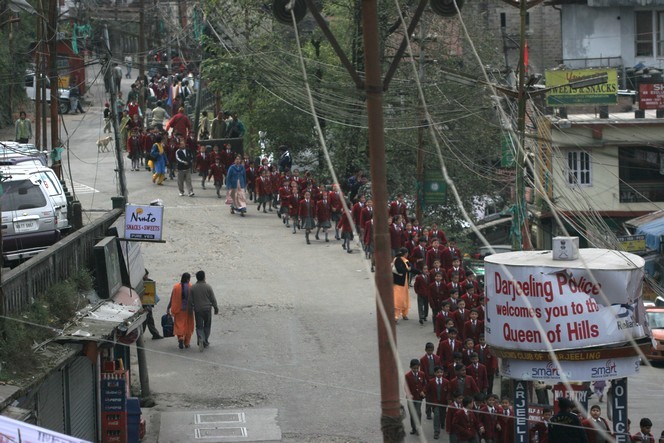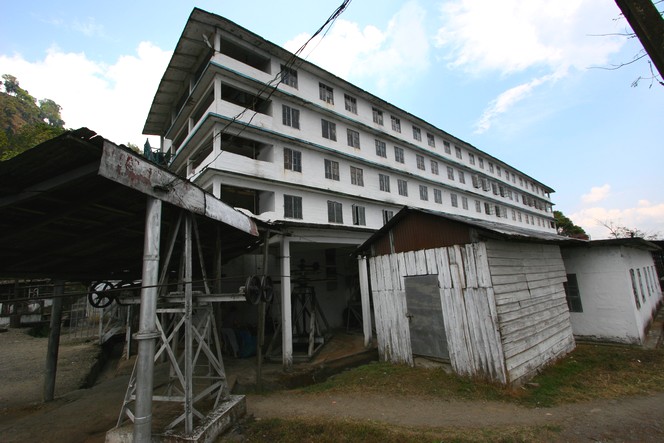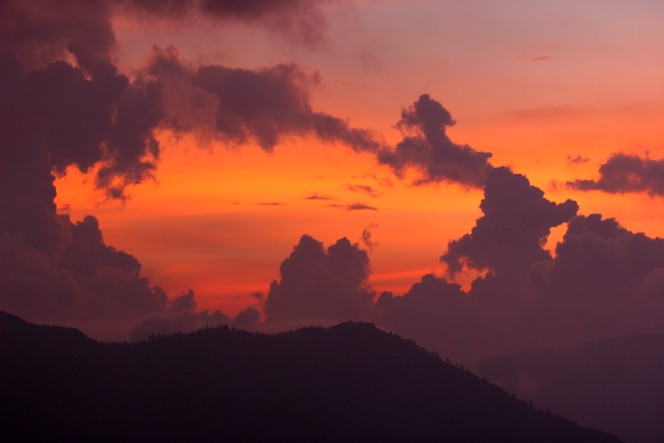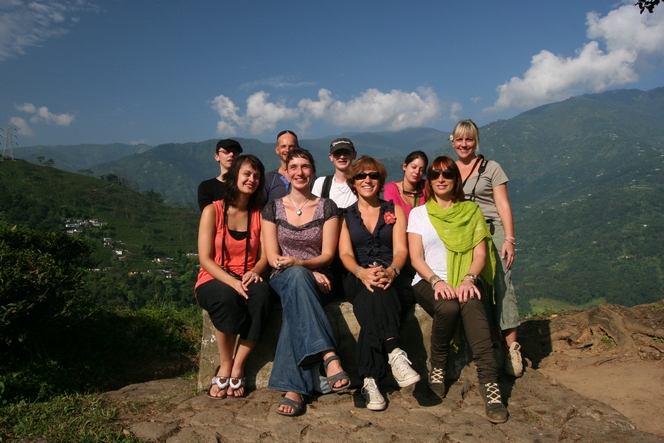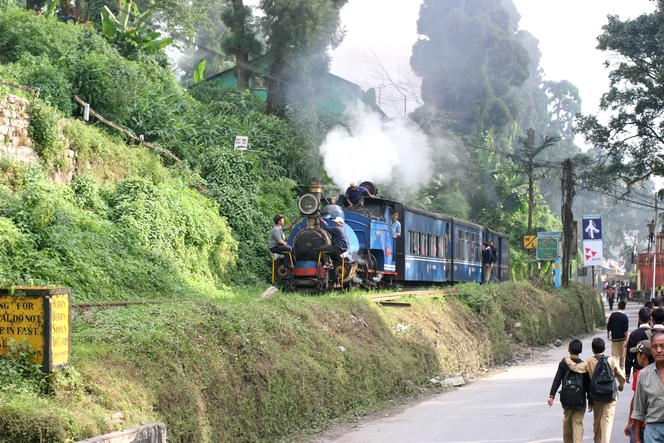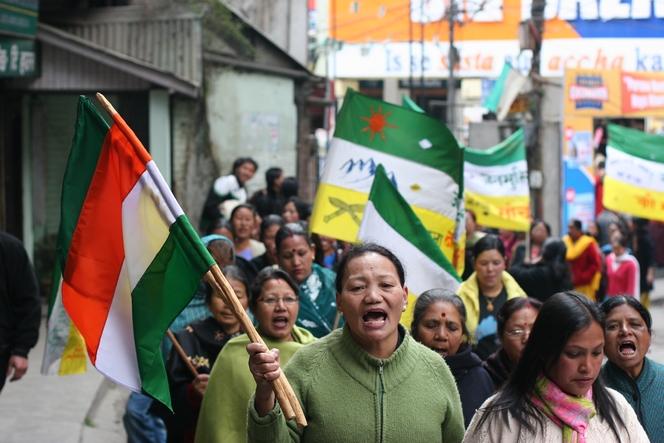Because of the heightened unrest in Darjeeling this year, I have had to alter my plans. The movement in favour of the region’s independence will decide today whether or not to block all the roads and shut down the shops again. So instead of visiting the Balasun plantation in the Kurseong region, I have decided to take a detour east. My friend Abhishek Dev, the grower at the Teesta Valley Tea Estate, came to collect me a short while ago from Bagdogra airport, and took me to his bungalow. Teesta Valley Tea Estate is in the extreme east of Darjeeling and from here, I can decide whether to go to Darjeeling city or not, depending on the turn of events tomorrow. At least, thanks to Abhishek, I have the latest news from Darjeeling and on the forthcoming harvest. And this evening, I can also meet the growers from Gielle, Runglee Rungliot and maybe Namring. These four tea plantations, situated at quite a distance from Darjeeling city but, of course, within the prestigious “appellation”, are some of the most beautiful in the region. In this photo you can see the view I have from here, in the late afternoon, walking towards the Gielle Tea Estate.
India
Calcutta : a place I really love
The City of Joy is also the city of tea. All the tea produced in Assam and Darjeeling is shipped from the port of Kolkata (also known as Calcutta), and the plantations in the north of India all have offices in the city. So I often come here, and go to tea tasting after tea tasting.
The city is unbelievably dilapidated. It is overpopulated, overcrowded, crumbling, stifling, humid and disgustingly dirty. It has a way of sucking the life out of you. Yet despite all this, I really love the place. I am happy in Kolkata.
Le Palais des Thés team in Tomsong
This morning I left for Kolkata. From there I will travel to Darjeeling, probably on Tuesday. The spring harvest will begin soon, and it is time to visit a few plantations, find out more about the crop, and “test the temperature” of the region in more ways than one. Tea plants go to sleep in the winter, because of the cold, and wake up again when the air warms up. Inversely, the people get fired up during the winter months over the issue of independence, and cool down in the spring when the tea and tourist trades pick up again.
There is an important stage in tea processing that I am sorry not to be able to share with you: the “withering”. This involves blowing air – preferably cold – over the leaves, which give off an incredible fragrance like white flowers, lily and jasmine. In this photo taken in Tomsong in October 2010, during a trip with the team, everyone is cupping leaves in their hands and inhaling the wonderful aroma.
If you would like to see some other highlights from our trip, click on this link (in French):
http://www.palaisdesthes.com/fr/le-the/palais-des-thes-darjeeling.htm
Tea plants under clear sky in Thiashola
On cold, grey days like these, we long for the heat of the sun and a glimpse of blue sky.
But tea plants are not like us; they like a bit of mist, and flourish in humid surroundings. They love it when the air is cool and visibility is reduced to a few metres. They are not so keen on a blue sky overhead.
I found this beautiful, rare, clear azure sky in Thiashola, in the Nilgiris mountains (India).
School children in uniform on Nehru Road
In Darjeeling, like everywhere else in India, school uniform is taken seriously. At every level of the education system, school colours are worn with pride. Here, the boys and girls are wearing the school crest embroidered on their blazers, and perfectly knotted ties. I imagine one of the benefits of this system is to iron out differences in social backgrounds.
This morning parade gives me the opportunity to show you a street in Darjeeling. This is Nehru Road, where my hotel is. Look at the complex networks of electrical cables. They inspire respect for the engineers, who must have a very difficult job with repairs.
You will also notice that in this city, affectionately known as the “Queen of the Mountains”, the Darjeeling police, despite the battered air of their station, extend a warm welcome to visitors!
Namring Tea Estate : an imposing factory
In those countries where the British were in charge of tea growing, the processing factories are of an imposing size.
The upper floor, or upper floors, like here on the Namring Tea Estate (India), are devoted solely to withering the tea leaves. The rolling, oxidation, drying and sorting of the various grades take place on the ground floor of the building.
Darjeeling sunset
The sun sets over Darjeeling. If you manage to find a good vantage point from the city centre, this is the view you will get. In this part of the world, the morning skies are often very clear. However, in the evening it can be difficult to spot a patch of sky that is free from cloud, as this is when they like to gather. They come from the Terai plain, or sometimes form right here, in the bottom of the valley. They have nowhere else to go, as they are surrounded by mountains.
This red sky is the old year. Soon it will be night and a new year, 2011, with new roads for us to travel together. New harvests, new delights… I’d be delighted if you’d accompany me.
Le Palais des Thés on a trip to Darjeeling
As promised, here’s a picture of the team who accompanied me to Darjeeling last month. From left to right: Yann (Rue du Cherche-Midi store, Paris), Stéphanie (Grenoble store), myself, Virginie (Brussels store), Thomas (warehouse), Carine (Ecole du Thé), Maud (Rue Vieille-du-Temple store, Paris), Fabienne (Lille store) and Nathalie (human resources).
We spent a week in Darjeeling, where this great team were able to discover the region I love, meet our suppliers, and put every question imaginable to the tea plantation managers. And meet the people who toil to produce such rare teas. We had some wonderful encounters, and the trip further deepened my understanding of this field, which I have always found so rewarding.
The little Darjeeling train requires a large crew
I warned you: the little Darjeeling train steams into my blog whenever it feels like it. Here it is at home. You will see that no fewer than four people seem to be required to run it today, and I wonder if there might be a fifth in the cab. Actually I can never be sure how large the crew is, because each time I see it, the number of people working around the locomotive varies.
One thing I am certain of, however, is where I took this photo: in Kurseong, just after coming out of the “Kurseong Tourist Lodge” where I always stop to eat a plate or two of momos before continuing on my way to Darjeeling.
In Darjeeling, a separate state is subject of debate
There has been political tension in Darjeeling for some 30 years. While everyone agrees on remaining within the Indian Union, a large proportion of the population would like some independence, with their own Indian state, instead of being part of West Bengal as the region is today. Being a separate state, like neighbouring Sikkim, might result in better infrastructures, with direct funding from the capital Delhi instead of having to wait for aid that never comes from Kolkata. Most people in Darjeeling are Indians of Nepalese origin who would prefer to be able to make their own decisions on matters that concern them. Some have already given the future state a name which you see scrawled along the roadsides, and which is being chanted by these protesters marching in Darjeeling: “We want Gorkhaland!” You can see they are waving two different flags: the flag of the future Gorkhaland, and the flag of India, to show that they want the new state to be firmly embedded within the Indian Union.

